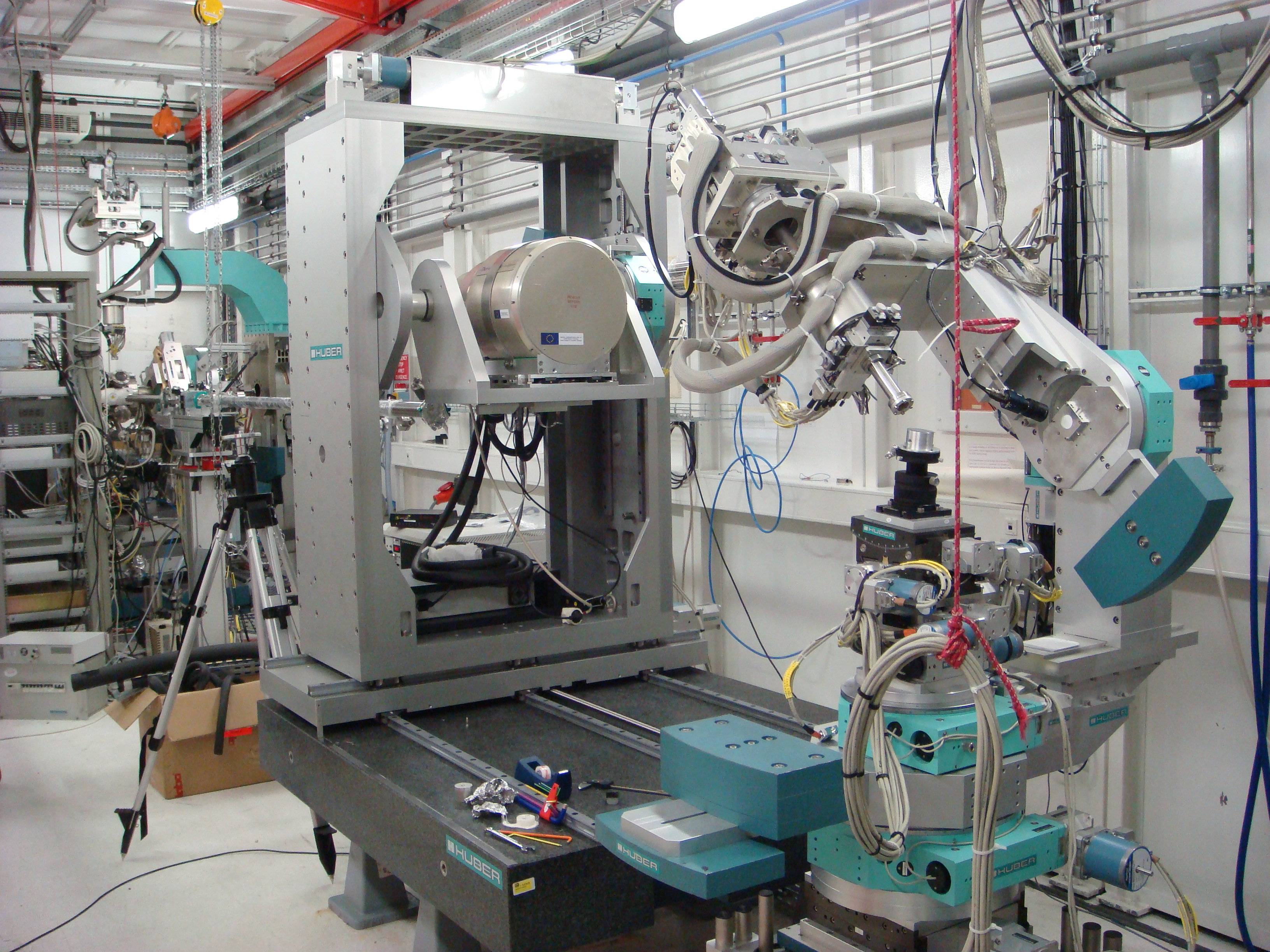- Home
- Users & Science
- Find a beamline
- Collaborating research group beamlines
- BM25 - SpLine - The Spanish CRG Beamline
- Beamline
- Experimental Stations
- EH2 - Grazing incidence X-Ray diffraction (GIXRD)
EH2 - Grazing incidence X-Ray diffraction (GIXRD)
GIXRD - Grazing incidence X-Ray diffraction
The main objective of this set-up is to provide a large variety of X-ray diffraction experiments for the Spanish scientific community, as well as for foreign scientists around the world. An important aspect, which has been one of the major goals of the end-station during the design, start-up and upgrade periods, is the adaptability and flexibility for different sample environment set-ups that must be easily installed to allow for a high throughput of users. It is conceived to carry out X-Ray Reflectivity (XRR), Surface X-Ray Diffraction (SXRD), Single Crystal Diffraction (SCD), Reciprocal Space Maps (RSM), Grazing Incidence X-Ray Diffraction (GI-XRD) and Grazing Incidence High Resolution Powder Diffraction (GI-HRPD) experiments. Thus, the multipurpose character of the end-station is reflected on the huge variety of experiments carried out in the last years, showing multidisciplinary work areas, from surfaces and thin films to liquid crystal materials.
Figure below shows a scheme and a picture of the multipurpose X-ray diffraction set-up. It is mainly composed of a six-circle diffractometer in vertical geometry equipped with a 2x2 Maxipix detector on the diffractometer arm. The six-circle instrument is a very flexible diffractometer due to its six (or seven in the case of single crystal configuration) degrees of freedom. Three circles are dedicated to the sample motion (χ, φ and θ), two circles are dedicated to the detector motion (Γ, δ) and finally a rotation (μ) coupled to the sample and detector motion is present. The θ-circle rotates the sample around the direction normal to the sample surface and the (χ, φ)-circles are used only for the sample alignment. The μ-circle sets the beam incident angle, which can be varied between 0.0o and 5.0o. The Γ-detector circle performs out-of-plane measurements while the δ-circle, when Γ=0, performs in-plane measurements. The diffractometer sphere of confusion for all axis circles is 50 μm.
The diffractometer has its main axis in the vertical and is able to house loads up to 50 kg. In this way UHV baby chambers, magnets, cryostats and reactor cells are easily accommodated. In addition to the standard circles for orienting the sample and the detector, additional motions to align the surface normal along predefined directions (vertical or horizontal) are required for interface scattering experiments, as it is customary in surface diffraction.
 |
|
For high-resolution experiments, a θ−2θ set-up together with a goniometer head is installed on the detector arm in order to use a crystal analyser. An angular resolution of 0.002o has been obtained in a θ−2θ scan for the Si (400) reflection by using Si(111) as a crystal analyser. Two pairs of slits are located on the detector arm. A pair of slits is placed near the detector (750 mm from the sample) defining the angular acceptance while a pair of slits is placed near the sample (200 mm from the sample) defining the area seen by the detector.
The detector arm incorporates an additional rotation (ν) around its axis for polarization analysis. Three translations movements (x, y, and z) are used for the sample positioning and two translations movements (x, z) perpendicular to the beam direction are used for the diffractometer alignment. An extra ω circle (spindle), which is mounted in a removable pseudo-kappa stage, is used for the single crystal measurements. The sphere of confusion of the ω circle is smaller than 10 µm (Wobble). The diffractometer is controlled using the SPEC software, which includes all the equations for the angular motions for the six-circle geometry. The SPEC software imposes the names of the angles.




